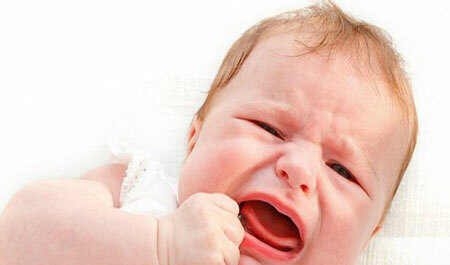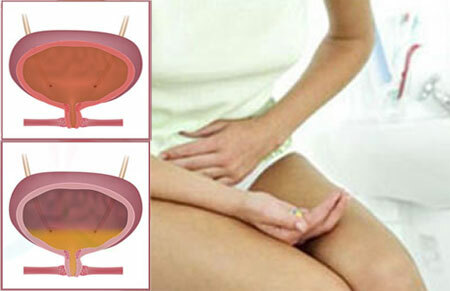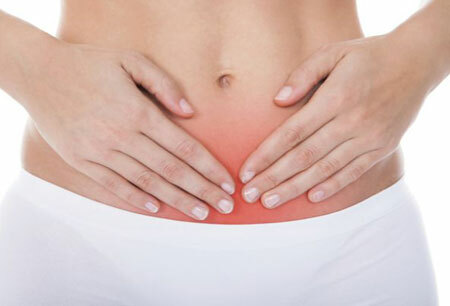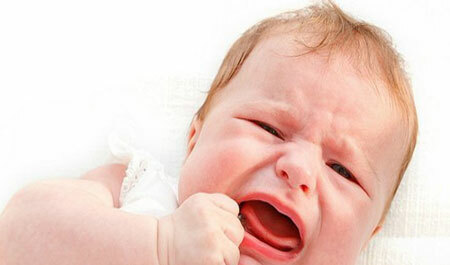Vomiting is a sharp ejection of gastric contents due to its contraction. The occurrence of vomiting in a child without fever and diarrhea may seem a minor symptom, but it is not.
Vomiting in itself is not a disease - it is a sign of a pathological process developing in a child's body. Sometimes it can be very serious diseases that threaten the life of the baby.
Contents of
- 1 Causes of vomiting in children without fever and diarrhea
- 2 What should parents do?
- 3 Treatment should appoint a doctor, when to contact?
- 4 What can not be done while vomiting?
Causes of vomiting in children without fever and diarrhea
Ejection of gastric contents against the background of general health can occur in children at different ages. There are quite a few reasons for this.
Thus, in newborns and children up to a year, this occurs in connection with the following diseases and conditions:

1. Pylorostenosis.
This is a congenital pathology, characterized by a narrowing of the outlet of the stomach due to muscle hypertrophy in this place. There is a disease in the first weeks of a newborn's life. The baby regurgitates immediately after feeding.From the usual regurgitation pyloric stenosis is characterized by the volume of discarded milk. Normally this volume is about a tablespoon. With pyloric stenosis, vomiting can occur as a "fountain" - for one vomiting, the entire portion of food eaten is thrown away.
In this case, the newborn loses weight, it shows signs of dehydration. Pylorosthenosis requires surgical treatment.
2. Pylorospasm. Occurs as a result of a strong contraction of muscle fibers located in the outlet of the stomach. Normal movement of food into the intestine is difficult.
More often this disease is manifested in premature babies, as well as children who experienced hypoxia in childbirth and with certain nervous illnesses.
Characterized by constant regurgitation or vomiting "fountain", abdominal pain, weight loss, increased anxiety of the newborn.
3. Esophageal diverticulum. This formation on the wall of the esophagus protrusion in the form of a sac, which is filled with food. At a certain position of the body( usually lying), the diverticulum can be emptied. It looks like a regurgitation or vomiting.
The child's condition may not suffer at the same time. Remove the diverticula surgically.
4. Gastroesophageal reflux. Regurgitation is considered the norm only in the first months of a child's life. Usually by the four months they cease.
If regurgitation occurs after eating in children older than this age and have a sour smell, then talk about gastroesophageal reflux. The reasons for its development are many: from overeating and improper mode of the day to congenital pathologies of the digestive tract.
5. Incorrect introduction of complementary foods. Too early introduction of unfamiliar products into the diet of the baby, as well as their introduction into a large volume can cause a gag reflex.
Thus, the body tries to get rid of foreign food, which the baby's enzyme system is not yet able to digest.
In children, both younger and older , the appearance of nausea and vomiting without fever is noted in the following cases:

1. Gastritis. May be accompanied by nausea and vomiting. The cause of gastritis in childhood can be taking medicines, as well as eating unusual or exotic foods.
2. Ingestion of foreign object. Children often try to taste all kinds of objects and small toys. Sometimes this may result in ingestion. The object irritates the gastric mucosa and causes its contraction. Vomit may contain blood.
3. Acute appendicitis. Often the first symptom of an appendix inflammation is a single vomiting. The rise in temperature can not immediately be, it appears later, when the inflammatory reaction becomes more pronounced. Food and Drug Administration.
4. Food allergy. Vomiting is aimed at eliminating the allergen. Occurs after a short time after eating, can be accompanied by rashes on the skin or swelling of mucous membranes.
5. Diseases of the central nervous system. This is the so-called cerebral vomiting, which is not associated with eating, it has a stubborn nature and it is easier for her to not become a child. It is observed with intracranial pressure, tumors.
6. Cough vomiting. A severe cough may result in an ejection of gastric contents. And there is an explanation for this. The point is that the cough center in the brain is next to the center of vomiting. If one is irritated, another irritates, resulting in a reduction and emptying of the stomach.
What should parents do?

Since it can be difficult for parents to determine why a child has vomiting without fever and diarrhea, the best thing to do in this situation is to make the child peaceful and comfortable. Then immediately call a doctor.
- The child should be kept in an upright position. If he is still too small to stand or sit, then you need to put him in a semi-sitting position, and turn his head sideways so that the vomit will not enter the lungs.
- Start rehydration therapy. Dilute the regidron according to the instructions, and give the baby 1-2 teaspoons.
- Stop feeding for a while.
- Observe the nature of the vomit and describe in detail how they looked to the visiting doctor.
Treatment should appoint a doctor, when to contact?
The occurrence of severe vomiting in a child without temperature requires the parents immediately to seek the advice of a specialist. Especially if your child is only a few weeks or months old.
At this age, the symptoms of serious diseases are smeared due to immature systems of the body, and parents can underestimate the severity and severity of the situation.
It's better to be safe by calling a doctor than blaming yourself in case of an irreparable situation.
What can not be done while vomiting?
- To refuse medical assistance.
- Rinse the stomach. This procedure is useful only for poisoning. If there is no certainty that the child has been poisoned, then rinsing can only worsen his condition.
- Give the baby antibiotics. Drugs of this group are forbidden to take without the appointment of a doctor!
- Take anti-emetic drugs. They, too, should appoint a doctor, if there is such a need.
- Give painkillers if the baby has a stomachache. This will smear the clinical picture and it will be difficult for the doctor to establish a true diagnosis. Especially dangerous is the use of pain medication with an "acute abdomen".Characteristic symptoms will be temporarily blocked. This can lead to the development of such complications as peritonitis, for example, with late diagnosed appendicitis.
The right thing to do is contact the child illness specialist as soon as possible. This will help to avoid many complications.



